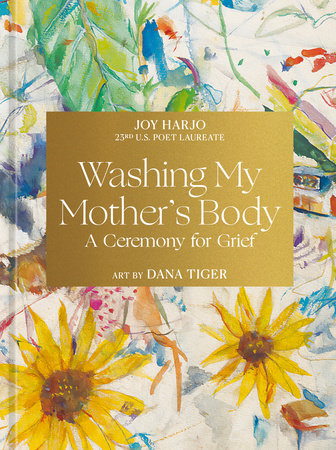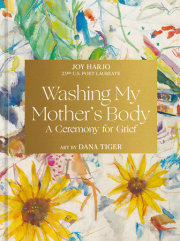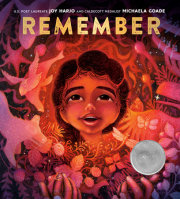IntroductionI never know what a poem, song, or other composition will offer. This poem surprised me. I was in the middle of writing a poetry collection involving research and interrogation of family history, particularly the removal of my father’s family from our homelands in the southeastern United States, when the first lines of “Washing My Mother’s Body” tumbled out onto the page: “I never got to wash my mother’s body when she died./I return to take care of her in memory./That’s how I make peace when things are left undone.” I had to run to keep up with the poem as it unfolded from the emotional depths of grief that I didn’t know I was still carrying.
Grief is uncontainable. It is a shapeshifter. One day, it is a few quiet tears. The next, a deluge and you tread through the salty waters for hours. As I wrote, I did not know what I would find. The poem was showing me as I followed it. Death is the companion of life. It remains a mystery. We will all eventually leave on a journey for which there is no discernable earth map. Poetry is a tool for the investigation of mystery, for finding words when there are no words. Words sung or spoken are often the doorways that begin and end the ceremony of transformative moments of our lives.
I wanted to honor my mother’s life by washing her body when she died. I wasn’t allowed that opportunity. She felt torn from me, a ritual undone. I was the oldest child, the oldest daughter, and I knew her in a way that no one else knew her. Maybe that is true of every child in every family. We each know our mother in a manner that is unlike any other. The mother root is the deepest root in each of us. This poem taught me that in poetry, you can bend time to go back and take care of what needs to be done.
If anyone knows about grief, it is the artist visionary Dana Tiger. She and her family have endured more than their share of loss. If anyone knows about joy, it is also Dana Tiger. For a lifetime, she has uplifted our community with brilliant images that tell the mythic and ordinary stories of our lives. Tiger’s art honors our Mvskoke community, reminds us that we have a special place in the earth story. Both Tiger and I come from families of artists. We both carry within us transformational relationships with our mothers. We are dedicated to our Mvskoke culture. Our cultural ways have taught us to respect the processes of living and dying. From this, we have collaborated on a book that is an offering to assist those bearing grief, to help others through to healing in this human journey. We ask that it be done with
vnoketkv and
vrakkueckv, with a love for people and ongoing respect for this mysterious and beautiful life.
Mvto.
—Joy Harjo
Copyright © 2025 by Joy Harjo. All rights reserved. No part of this excerpt may be reproduced or reprinted without permission in writing from the publisher.








